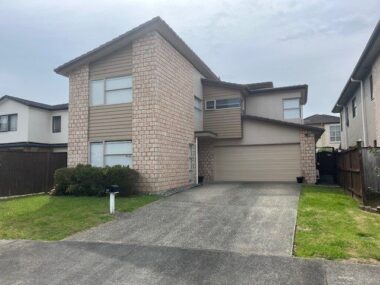Leaving the home where I raised a family and served as caregiver
I've moved on, but the history and memories I made will stay with me

I’ve moved! It’s exciting, but the move was daunting because of the sheer amount of work that went into clearing out items from a place where my children grew up from 2007 onward.
This place was our family home, housing much laughter, tears, and peace. History seeps through the walls, and every dent, scratch, and mark tells a story of the six of us who lived there.

The New Zealand home where Jaime Christmas cared for her late husband, Aubrey. She lived there for 17 years. (Photo by Jaime Christmas)
My late husband, Aubrey, and I raised a family there after we moved to New Zealand from Australia in 2005. Before that, we’d been nomads, shifting from country to country for his work. Our time in this house was the longest we’d lived anywhere.
When we arrived in Auckland, we recognized that we wanted to stay and grow roots there. Having rented places in the past, we decided to finally purchase a home for ourselves and set up shop.
We found a house in a suburb called Flat Bush, which, according to the organization East Auckland Tourism, got its name from the surrounding landscape, which was predominantly flat. Around 850 A.D., the area was called Pukekiwiriki, named after Ruaumoko, the Maori god of volcanoes.
As interesting as the area’s description is, the suburb was never that auspicious to us, at least at first. Over our 17 years there, though, we witnessed the significant development of more houses, a large neighborhood park complete with a playground where the kids spent many hours, and a lovely shopping center, where I’d get groceries or have catch-up chats with friends.
Old and new memories
I could continue reminiscing, but I’ll hold the precious memories of that home in my heart — memories not just of raising four amazing humans, but also of my journey caring for a spouse with hereditary ATTR amyloidosis.
The walls bear witness to Aubrey’s collapses, emergency services arriving to revive him, his frustrations, and the many times we sobbed as each of us learned to deal with the terminal prognosis. It was the house Aubrey and I built together, and now it’s the place I’ve let go.
The 36th president of the United States, Lyndon B. Johnson, said, “Yesterday is not for us to recover, but tomorrow is ours to win or lose.”
So as I settle into my new space, I’m looking forward to rebuilding my life and making new memories.
Note: FAP News Today is strictly a news and information website about the disease. It does not provide medical advice, diagnosis, or treatment. This content is not intended to be a substitute for professional medical advice, diagnosis, or treatment. Always seek the advice of your physician or other qualified health provider with any questions you may have regarding a medical condition. Never disregard professional medical advice or delay in seeking it because of something you have read on this website. The opinions expressed in this column are not those of FAP News Today or its parent company, Bionews, and are intended to spark discussion about issues pertaining to familial amyloid polyneuropathy.








Leave a comment
Fill in the required fields to post. Your email address will not be published.